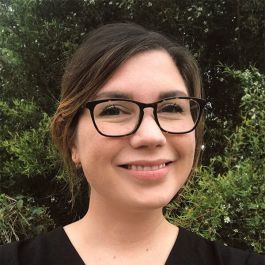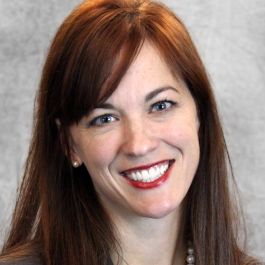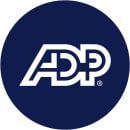
In order for a company to bring its mission to life, it must first rally the support of its people. Yet, inspiring ambition within employees requires effort from a company’s leaders and the people themselves — and it’s not something that happens overnight.
Whether a company aims to help people manage their student loans or make healthcare more accessible, all of them are sustained by equal amounts of passion and purpose. Leaders in particular are tasked with bringing both passion and purpose into every aspect of their organization. For them, supporting a company’s mission may mean creating companywide celebrations or having more one-on-one check-ins with employees.
But when it comes to the employees themselves, supporting a company’s vision looks a bit different. When team members do something as simple as support each other during a project or meet the needs of a client, a company’s mission comes to life.
Built in NYC recently checked in with 12 local tech leaders to learn how they’ve successfully galvanized their teams around their company’s mission. In part two of this two-part series, we'll hear from six of those leaders about the values that drive their work.
Sealed is dedicated to making it easier and more affordable for homeowners to get key upgrades. CEO Lauren Salz leads the company’s efforts to finance home comfort and efficiency upgrades with energy savings.
As a team leader, how do you translate your company mission into specific actions or goals for both the company and individual teams?
The Sealed team is united in our vision of a world where it’s easy and affordable for people to maximize their comfort at home, while minimizing their energy use and environmental impact.
Our mission is very tangible and part of everything we do on a day-to-day basis, because Sealed’s success is tied to the impact of our work: we only make money if homes save energy. So we track our energy savings and carbon reduction impact as part of our normal course of business, with every project that we scope, sell and install.
What aspect of your company culture or values most reflects your company mission?
One of Sealed’s core values is “transformative.” Fundamentally, our business model is about transforming waste to value. We find energy that homes are wasting and use the energy savings to invest in upgrades that improve quality of life and increase home value. We’re taking a transformative approach to our mission by focusing on our customers’ quality of life priorities first; most organizations focused on energy efficiency put more of an emphasis on the environmental benefits of conservation. We focus on solving comfort pain points for homeowners because we truly believe that by emphasizing improving the home and life inside of it, we can make more of an impact in the end.
Most of all, we’re transforming the relationship between people and business by making ourselves accountable for the results of our work; we only get paid if our projects save energy. A great recent example of a transformational effort our team took on was the launch of our new Climate Control plan, which ultimately could result in heating and cooling every home with high-efficiency heat pump technology powered by clean, renewable energy.
Our mission is very tangible and part of everything we do on a day-to-day basis, because Sealed’s success is tied to the impact of our work.
What role do your team members play in building, strengthening or celebrating your company mission?
The team often shares articles on Slack about milestones and events for the clean energy and sustainability community, and we discuss the broader progression of the clean energy industry in our all-hands meetings. We also celebrate every year on Earth Day the environmental impact of the company to date. In April 2020, we announced a carbon impact equivalent to planting more than 300,000 trees!
Summer operates a platform that helps people navigate the complex student loan marketplace. As lead product designer, Leah McLaughlin drives the company’s mission to save student loan borrowers time and money.
As a team leader, how do you translate your company mission into specific actions or goals for both the company and individual teams?
At Summer, our mission is to empower student loan borrowers to achieve their financial goals. We believe that when people have control over their financial situation, they are able to live happier, healthier lives. While our mission is epic in proportion, it is rather straightforward in practice. When prioritizing our work at Summer, we consider the impact that each task will have on borrowers and the team resources needed to accomplish it.
Our performance indicators also tie back to our mission. For example, a key objective is always to increase the number of borrowers we serve. This means we must prioritize projects like fine-tuning our recommendation algorithm, recruiting and training student loan experts and creating cost-effective marketing strategies to broaden our reach.
What aspect of your company culture or values most reflects your company mission?
At Summer, we value empathy most of all. The student loan space is rife with confusion, scams, malpractice, frustration and despair. We have seen how deeply broken the system is, and we’ve dug into some of the most complex policy details to make sense of it all and genuinely help student loan borrowers.
We’ve built a culture of empathy by genuinely listening to each other and assuming that our peers and leaders have the best intentions at heart as we strive toward our mission together. This makes for an extremely open and friendly work environment, free of defensiveness and hostility.
We’ve built a culture of empathy by genuinely listening to each other and assuming that our peers and leaders have the best intentions at heart as we strive toward our mission together.
What role do your team members play in building, strengthening or celebrating your company mission?
Each Friday, our team comes together for an all-company meeting. We use this time to highlight borrower stories and share examples of how we’ve helped them over the past week, which builds empathy among the team. We also use this time to deliver “high-fives” to teammates, celebrating individual employees who have excelled or contributed to our company mission.
Animoto’s online video maker is designed to make it easy for people to drag and drop their way to powerful and professional marketing videos. Vice President of Product and Design Kristen Connor plays a large role in empowering companies to easily create high-quality videos.
As a team leader, how do you translate your company mission into specific actions or goals for both the company and individual teams?
I try to use storytelling and metaphors as a way to help team members align around the future-state vision. In 2020, Animoto is drawing inspiration from the space race and President John F. Kennedy’s statement in 1962 that the U.S. would put a man on the moon by the end of the decade. At the time JFK said it, there was no clear path to achieve it. Yet, our country rallied around that vision, and it actually came to fruition in 1969.
Our two-year vision involves dynamically generating great videos on behalf of our customers, who are mainly small business owners. We also have no clear path to achieve it! But by telling the story of a real small business owner (Chef Maurizio Crescenzo, owner of Taverna di Bacco in NYC), we could together envision what the Animoto experience might be when we can automate videos on Chef Maurizio’s behalf and how his life and business would be improved. That shared vision has made it much easier for teams to start roadmapping, designing and building to achieve it by the end of 2021.
What aspect of your company culture or values most reflects your company mission?
We have three company virtues, which define our code of conduct at Animoto: Betterfication, Humbletude and Oomphosity. All three are absolutely critical for us to achieve our mission, but let’s focus on the first. Betterfication is a state of being hungry for solutions, not problems.
A small Animoto team got together in Q1 and conducted a two-day workshop to explore how we might learn to dynamically generate videos this year. We set fairly modest goals, as we were working in a totally unfamiliar problem space. Yet within months, the team had far exceeded those initial goals and created a functional prototype that is actually auto-generating videos on behalf of real Animoto customers in a test environment. We’re going to learn from the test and iterate into a more valuable experience for our customers, maybe on a faster timeline than we even imagined. It’s the spirit of Betterfication that is making this progress possible.
Giving teams the room to choose their own opportunities results in a sense of ownership, which drives so much innovation.
What role do your team members play in building, strengthening or celebrating your company mission?
Teams at Animoto have a lot of autonomy in determining exactly how they can best drive our vision and mission. We use the growth flywheel framework, as defined in “Turning the Flywheel” by Jim Collins, which is a monograph to his book, “Good to Great.” We often ask each team to focus on a particular section of our flywheel, but then they have a great deal of room to make data-informed decisions about the most important opportunities and solutions that will make our flywheel turn faster. Giving teams the room to choose their own opportunities results in a sense of ownership, which drives so much innovation, like the early prototype that auto-generates customer videos.
Galileo is a healthtech startup that aims to reinvent the doctor-patient relationship. Software Engineer Manasa Navada helps further the company’s mission to make high-quality healthcare more affordable and accessible through technology.
As a team leader, how do you translate your company mission into specific actions or goals for both the company and individual teams?
As a software engineer, I joined Galileo with little knowledge about the healthcare industry and the clinical decision-making process. But since joining, I have been building a deeper understanding to make sure that our designed flows and features allow our clinical team to deliver high-quality care and also create a delightful experience for them.
What aspect of your company culture or values most reflects your company mission
Being client-centric is a core value on our product engineering team. We have regular feedback sessions with our provider team to continuously enhance our clinical platform in close partnership. In these feedback and review sessions, we also like to brainstorm about how we can build features to improve provider efficiency so that we can keep our costs low and make healthcare more affordable to our patients. In addition, our PSA team is invaluable in advocating for our patients and bringing up areas for improvement on our patients’ behalf.
On the product engineering team, we cultivate a culture of introspection and ongoing education.
What role do your team members play in building, strengthening or celebrating your company mission?
On the product engineering team, we cultivate a culture of introspection and ongoing education. No one should be content with their knowledge and skill level and should always find ways to grow and expand. As I mentioned above, I joined Galileo with little knowledge about the healthcare industry. Since joining, I have been learning about healthcare through design reviews, engineering meetings and brown bags, and most importantly, working with our providers in the design of new features and improvements to existing functionality. Besides learning about healthcare and use cases, since we are a small team, I was able to partner with our site reliability team to work on infrastructure projects to make our product — and our lives as engineers — better.
Lifion offers a cloud-native human capital management (HCM) solution. As head of people at Lifion, Lacey Schmidt supports the company’s mission to provide global organizations with the stability and agility they need to manage and adapt to a rapidly changing work environment.
As a team leader, how do you translate your company mission into specific actions or goals for both the company and individual teams?
The best thing we, as leaders, can do is ensure that company missions resonate with our teams and that we, as individuals, align to it. A mission statement is meant to remind us of who we are, and it’s up to the people in the organization to put that into action. For us, the mission to “Power organizations with insightful solutions that drive business success” needs to be at the core of everything, and it’s a good pressure test when we examine our OKRs, how we are investing our time day to day and even how we are accelerating our talent. If we can’t tie back the actions that make up that work to our mission, it’s time to refocus.
What aspect of your company culture or values most reflects your company mission
Organizational culture and values are such a collective experience while, at the same time, so individual; I’m fascinated by both. Culture is really reflected in the stories people tell in an organization, and I have so many stories!
For me, the value that has always resonated most is “Each person counts.” In our strengths-based culture, weekly check-ins with leaders through our StandOut tool to share what each person loves, loathes and needs from their leaders is essential for everyone to remain aligned across the organization and have impactful conversations. It is also key to recognizing the uniqueness each individual brings in driving our collective success. Keeping my focus on that value has really changed the way I lead and has made me a better person.
Another very recent example of this value is that we just rolled out an updated paid time off for voting policy in which we recognize, in a non-partisan way, that we have the opportunity to enable our associates to ensure their voice is heard in elections around the globe.
The best thing we, as leaders, can do is ensure that company missions resonate with our teams and that we, as individuals, align to it.
What role do your team members play in building, strengthening or celebrating your company mission?
Through our focus on talent acceleration to drive business results, it would be easy to say that this is part of our job. However, I firmly believe we must all play a role in being stewards of our organization’s mission.
Some key areas my team and I engage in include driving targeted initiatives, like our quarterly engagement pulse for team members to share in a quick eight-question survey how the team is doing with their leader. We work across the organization to ensure our leaders are well-equipped to facilitate conversations with their teams to understand results and key actions and gain more velocity around engagement.
SevenFifty operates an end-to-end supply chain and communications platform that connects alcohol buyers, sellers and distributors. As chief strategy officer, Adam Van Fossen oversees the company’s efforts to support producers of craft alcohol through technology and data.
As a team leader, how do you translate your company mission into specific actions or goals for both the company and individual teams?
In a day-to-day context, the operative part of our mission statement is about creating connections between people. This has taken on a new meaning in light of how our industry has been transformed by COVID-19. Restaurants have closed, wine and spirits retail has moved online and supply chains are strained.
As a technology provider, we have a great opportunity to help folks leverage our tools and services to navigate this new business landscape. We’ve seen this drive the decision-making on a daily basis in how we have adapted our product roadmap toward tools that enable “distance selling” and e-commerce, support team strategies that can better enable remote sales and even internal operations that focus on meaningful interactions through Zoom and Slack to help each of us stay motivated and engaged as a 100 percent remote company.
What aspect of your company culture or values most reflects your company mission?
We have a value called “Respect the craft,” which has multiple meanings. It speaks to our respect for our customers’ ”craft” of producing and selling wine, beer and spirits, but also to our vocational “craft” of building, selling and operating transformative technology. Our employees are a diverse and passionate bunch — some come from the hospitality industry, others have a tech background — and that mix creates a unique culture and shared respect for one another’s “crafts.” Across the company, interests range between things like home brewing, gardening, cycling, Disney movies and even the band Phish. People connect and share their “craft” and passions through online happy hours, Slack chat rooms and discussion groups. This helps create and maintain a strong connection with each other and a strong sense of community.
We think that reinforcement of our goals and mission has to be consistently practiced, upheld from the highest levels of strategy and roadmap building all the way down to how we communicate with each other in Slack.”
What role do your team members play in building, strengthening or celebrating your company mission?
We hire people who believe in our company mission, and we consistently reinforce our focus on our mission through our company values. Every month, we award a “values superstar” that is nominated and voted on by employees for specific actions they took that exemplify our values. Each month we rotate to a new value. Whether it be “Respect the craft,” “Light the way,” or “Stir it up,” we’ve found this to be a great way to continually celebrate and highlight these values and educate new employees on these important aspects of company culture.
As a remote company, we put extra attention on the tools we use to build our culture and focus on our mission. We give out “tacos” (emojis) in Slack when someone does something that aligns with our values or mission. We keep a tally of “tacos” and give shoutouts to our winners at our company all-hands meetings. It’s a small, quirky thing, but we think that reinforcement of our goals and mission has to be consistently practiced, upheld from the highest levels of strategy and roadmap building all the way down to how we communicate with each other in Slack.
















